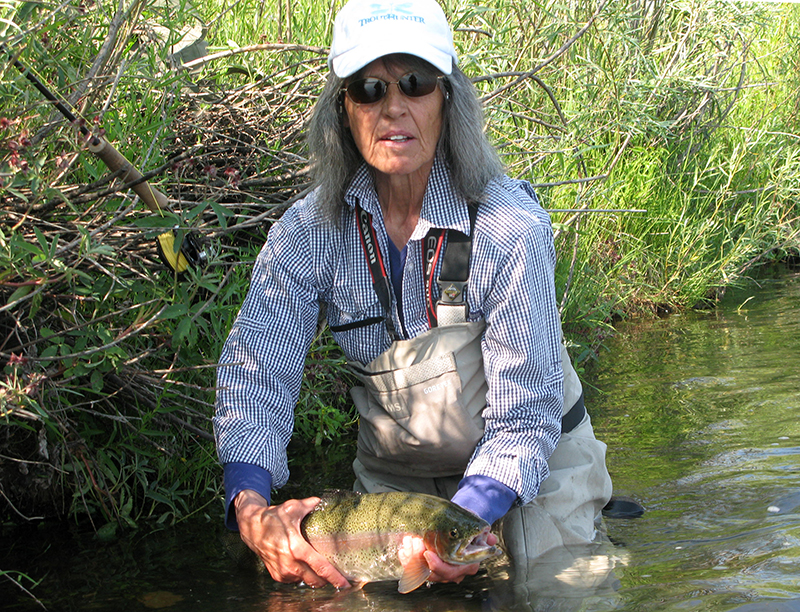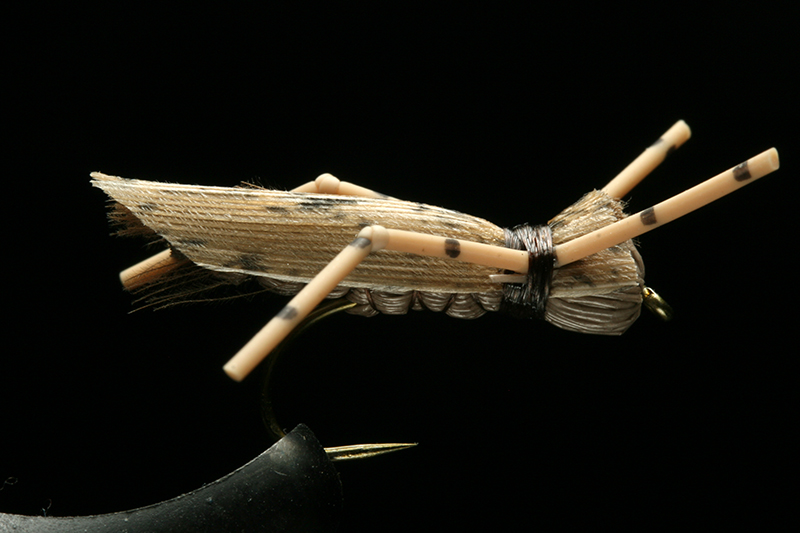 With a variety of caddis, PMDs, Callibaetis, Tricos, and even a few Gray Drakes on the August hatch menu, it might seem rather greedy to anticipate even greater diversity in insect availability on the Henry’s Fork. However, this is exactly what mid-summer brings in terms of dry fly opportunity. This applies to not only the variety of potentially effective imitations but also the amount of daily time that trout can be expected to look upward for a meal.
With a variety of caddis, PMDs, Callibaetis, Tricos, and even a few Gray Drakes on the August hatch menu, it might seem rather greedy to anticipate even greater diversity in insect availability on the Henry’s Fork. However, this is exactly what mid-summer brings in terms of dry fly opportunity. This applies to not only the variety of potentially effective imitations but also the amount of daily time that trout can be expected to look upward for a meal.Typically, August is a hot, dry month that finds aquatic insect activity confined to the cooler portions of the day. This means that morning and evening hours are generally the most productive if you are looking for mayfly hatches and spinner falls or caddis activity. Fortunately, a different category of trout tempting insects actually become more available to trout during the heat of the day when calm often gives way to breezy conditions.
Generally speaking, land based insects like ants, beetles, and hoppers are more familiar to most fly fishers who find the complexity of aquatic hatches to be somewhat difficult to understand and deal with. Classified as terrestrials, insects that dwell in the vegetation that borders rivers and lakes become helpless when they fall or are blown onto the water, and many become victims of opportunistic trout.
Since terrestrials always arrive on the water from above, they do not present the same angling complications as those that rise from underwater habitat to the surface. Nymphs, Pupae, Emergers, and other life stage related images play no role in successfully imitating land originated organisms that are subjected to instant peril when on the water, regardless of whether they are consumed by trout or not.
 Because a single respective image is all a trout will ever see of a hopper, ant, or beetle, only size and color are normally considered essential when selecting the appropriate pattern. And while acknowledging that dozens of variations occur in the names and construction methods of terrestrial imitations, all are general reflections of a natural counterpart.
Because a single respective image is all a trout will ever see of a hopper, ant, or beetle, only size and color are normally considered essential when selecting the appropriate pattern. And while acknowledging that dozens of variations occur in the names and construction methods of terrestrial imitations, all are general reflections of a natural counterpart. Water conditions, including clarity and current speed, influence how terrestrial patterns are tied. A slow, clear current will require more realism in the imitation than one that emphasizes flotational capacity for use on fast, broken current.
It could be argued that a big trout will prefer a fat hopper over nearly any other food source. Additional benefits of hopper fishing include the absence of the need to avoid drag when fishing a hopper imitation. Twitching a drifting fly helps to mimic the struggling motion of a natural trying to escape from the water. Grassy stream banks or shorelines that are oriented toward a prevailing wind are prime areas for finding trout accustomed to seeing hoppers. Casting to a rising trout or simply searching the water’s edges with a hopper pattern are productive ways to capitalize on the seasonal opportunity that hoppers provide.
Fishing a size 6 or 8 beetle is not unwarranted effort when naturals exist of equal dimensions. However, size 12-16 imitations are more representative of the average size range of these common terrestrials. Beetles exist in a variety of colors but a black pattern that incorporates peacock herl is hard to beat.
 While wind can be an asset in distributing them onto the water, trout seem entirely willing to accept a drifting beetle in calm conditions. I frequently rely on a beetle imitation when only sporadic rises can be observed, which indicates opportunistic rather than selective feeding activity. Recognizing an inability to escape, the rise to a beetle is typically slow and quite deliberate. A missed strike is generally the result of trying to set the hook too quickly on a big fish.
While wind can be an asset in distributing them onto the water, trout seem entirely willing to accept a drifting beetle in calm conditions. I frequently rely on a beetle imitation when only sporadic rises can be observed, which indicates opportunistic rather than selective feeding activity. Recognizing an inability to escape, the rise to a beetle is typically slow and quite deliberate. A missed strike is generally the result of trying to set the hook too quickly on a big fish. On many still and moving waters in the northern Rockies, ants are probably the most important terrestrial insect. This especially applies to the winged variety which can be of substantial size and numbers.
Most who have fished the Henry’s Fork, Madison, or Hebgen Lake in mid to late summer are aware of size 14 honey colored flying ant that can produce some of the year’s most exciting fishing. Mysterious to some extent, the Honey Ants can be observed on the water in numbers that would rival a hatch of mayflies or caddis.
Marked by aggressive rises that can border on explosive, Honey Ants evoke as much trout enthusiasm as Green Drakes. And remarkably, they seem most likely to appear at around noon on calm, hot days.
A modest number of Honey Ants is a more realistic expectation than a massive appearance. But trout response to these obviously favored morsels is quite consistent.
 With Red and Cinnamon colors as other possibilities, Black Ants seem most able to produce consistent results on water I have fished. From big size 10 Carpenter Ants through tiny size 24’s, a Black Ant pattern will produce as many trout through the warm months of summer as any other artificial.
With Red and Cinnamon colors as other possibilities, Black Ants seem most able to produce consistent results on water I have fished. From big size 10 Carpenter Ants through tiny size 24’s, a Black Ant pattern will produce as many trout through the warm months of summer as any other artificial. In a region known for insect diversity, no portion of the season provides more dry fly opportunity than when land dwelling insects meet the water. When added to the aquatic varieties, ants, beetles, and hoppers contribute to what many consider to be the best time of year to fish Yellowstone country. With the glamour hatches now in the rearview mirror, August seems reserved for those who understand that there is more to western fly fishing than drakes and salmon flies. With uncrowded water and weather that is predictably comfortable, there is no better time to be alive and a fly fisherman.
